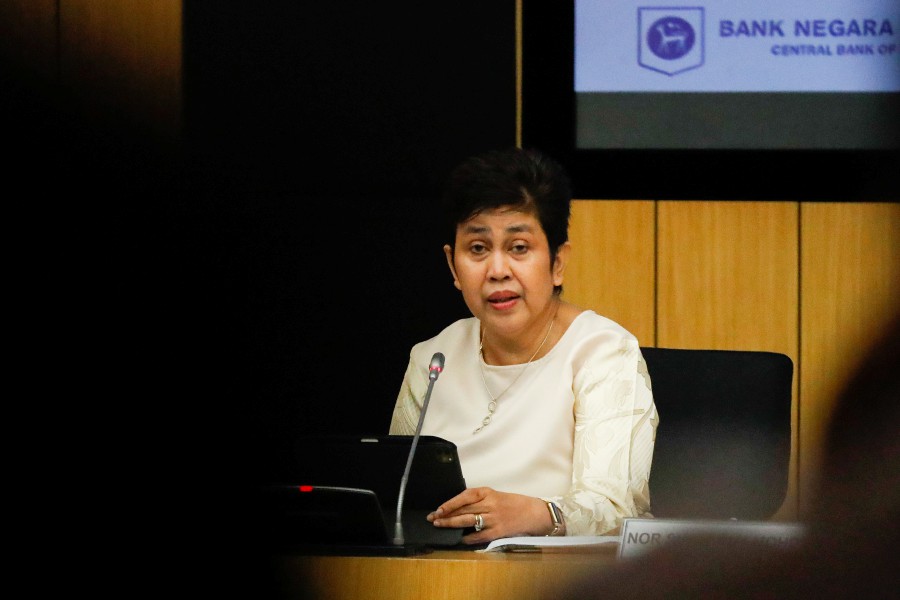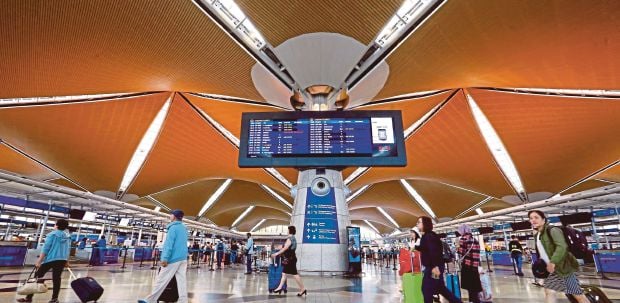KUALA LUMPUR: The Malaysian economy has grown faster in the second quarter (Q2) of 2022 than the 5.0 per cent posted in Q1, with Bank Negara Malaysia expecting the pace to be even better in the current Q3.
The country's gross domestic product (GDP) grew 8.9 per cent in Q2, its fastest annual pace in a year, boosted by expansion in domestic demand and resilient exports.
This was faster than the 6.7 per cent growth forecast in a Reuters poll and the 7.0 per cent median estimate in a Bloomberg survey, positioning Malaysia among the best Asian economies to recover from Covid-19.
Bank Negara governor Tan Sri Nor Shamsiah Mohd Yunus said while GDP was lifted to some extent by the low base from the Full Movement Control Order (FMCO) in June 2021, growth in April and May 2022 was particularly robust.
With the GDP growth in the first half of 2022 at 6.9 per cent, the central bnank expects the Malaysian economy to expand further for the remainder of the year.
Still, Bank Negara is keeping its GDP growth projection at the upper end of its official range of 5.3 per cent to 6.3 per cent for 2022.
Nor Shamsiah said this would be supported by private sector spending amid higher tourist arrivals, and recovery in labour market conditions, which would more than offset the moderation in external demand.
"Given the strength in the first half of 2022 which grew by 6.9 per cent, we expect growth for the year to be at the upper end of the range of 5.3 per cent to 6.3 per cent, even after taking into account the slower global growth.
"For Q3, we expect that growth would be much higher because of the base effect," Nor Shamsiah told reporters after a briefing on Malaysia's second quarter (Q2) GDP here today.
Headline inflation will probably average closer to the top end of a 2.2-3.2 per cent range, she said, adding that monetary policy continued to be accommodative after raising the policy rate by a total of 50 basis points since May.
The central bank said during the quarter, headline and core inflation increased to 2.8 per cent and 2.5 per cent respectively (Q1 2022: 2.2 per cent and 1.7 per cent respectively).
Universiti Kuala Lumpur's Business School economic analyst Associate Professor Aimi Zulhazmi Abdul Rashid said the 8.9 per cent expansion would help to offset the effects of global economic slowdown with high inflation rates especially in the developed economies like the US, the UK and other major European countries.
He said the restrictions imposed by China's government to curb Covid-19 in industrial cities had also slowed down its growth.
"So this should give pointers to the Malaysia government in preparation of the national budget 2023, that is to stimulate the domestic economy in order to balance the global economic recession," he told the New Straits Times.
Aimi said Malaysia might need to stimulate the domestic economy by practising fiscal and monetary policies that were out of the box such as not imposing any rate hikes to the overnight policy rate until the economy attained growth momentum equivalent to 2019.
He suggested more spending on the fiscal policy by the government, especially the development sector and more effective control on the subsidy disbursement to the targeted groups.
Putra Business School associate professor Dr Ahmed Razman Abdul Latif said the strong GDP growth would boost investors' confidence towards Malaysia which was already reflected in the high volume of foreign direct investment in the first half of the year.
However, he said although Bank Negara expected growth momentum to continue for the remainder of the year, the figure would not be higher than what was posted for Q2.
"I think growth will remain positive but not necessarily higher than Q2 due to continuing uncertainties at the global stage such as Russia-Ukraine crisis, US economic recession and projected global economic slowdown," he said.
Meanwhile, Nor Shamsiah said growth for the rest of the year and 2023 would be driven mainly by private sector expenditure, particularly as tourism sectors normalise towards pre-Covid levels.
She said investment activity stood to benefit from the realisation of multi-year projects such as the MyDigital, East Coast Rail Link and the Light Rail Transit Line 3.
"Supply chains are also expected to ease as receding Covid-19-related disruptions and slowing global trade alleviate some of the pressures going forward. These would offset the expected moderation in global growth," she added.





